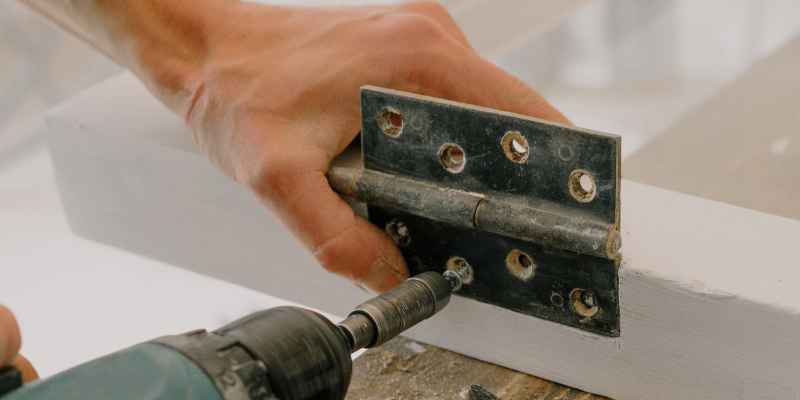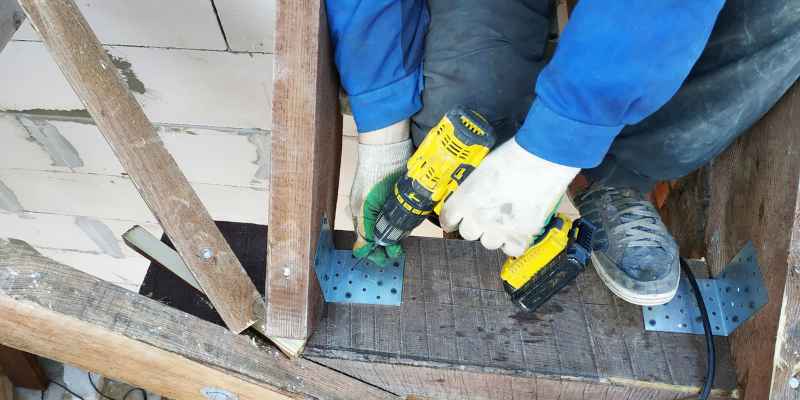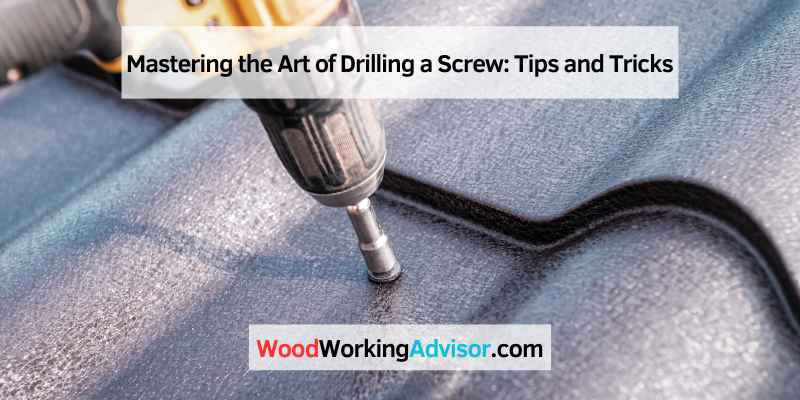To drill a screw, choose the appropriate drill bit size, position the bit on the indentation, and drill to a depth equal to the screw’s length before installing the screw. Drilling a pilot hole is recommended to prevent splitting the material.
Successful drilling of a screw is crucial for secure fastening of materials. It is essential to have the right drill bit size, appropriate torque setting, and proper positioning of the screw before drilling. We will discuss the step-by-step guide on achieving a secure screw drive, different types of screws, and the appropriate methods to use when drilling screws.
We will also explore common mistakes to avoid when drilling screws and provide tips for successful screw driving.
Drilling A Pilot Hole
When drilling a screw, it is important to create a pilot hole first. This will help prevent splitting the wood and ensure the screw goes in straight. Choose the right bit size and drill a hole to the same depth as the screw’s length before inserting the screw.
Why Drill Pilot Holes
When fastening screws into wood or other materials, it’s essential to drill a pilot hole before drilling the screw itself. A pilot hole is a small hole drilled into the material to guide the screw as it goes in. Why drill pilot holes, you may wonder? Drilling a pilot hole prevents the wood from splitting, ensures a straighter and neater installation, and reduces the likelihood of the screw breaking or becoming loose over time.
How To Drill A Pilot Hole
Drilling a pilot hole for a screw is relatively simple. First, determine the size of the pilot hole needed based on the screw’s size and material. Next, choose a drill bit that is slightly smaller in diameter than the screw’s shank and attach it to your drilling machine. Now, position the drill bit in the center of the spot where you want to place the screw and start drilling slowly, applying light pressure. Stop when you’ve made a hole of the same depth as the screw’s length and clear away any debris.
Fastening The Screw
After drilling a pilot hole, you can now fasten the screw into the material. Slip the screw into the hole you made, ensuring it’s aligned correctly. Then, use a screwdriver or power drill to turn the screw clockwise, driving it into the material. Avoid over-tightening the screw or applying too much pressure, or it may break or damage the wood.
Benefits Of A Pilot Hole
Drilling a pilot hole comes with several benefits. First, it ensures a more secure and stable hold, reducing the risk of the screw breaking or coming loose. Second, it prevents the material from splitting, which often happens when driving a screw into wood without a pilot hole. Third, it helps maintain the screw’s straightness and alignment, ensuring a neater and more precise installation.
Conclusion
In conclusion, drilling a pilot hole is a necessary step when fastening screws into wood or other materials. It helps ensure a more secure, stable, and neater installation, reducing the likelihood of damage or failure over time. Follow the steps outlined above to drill a pilot hole for your next project and enjoy a smooth and hassle-free experience.

Driving The Screw
Learn how to drive screws with ease by following a few simple steps when drilling a screw. From choosing the right bit to fastening the screw, this process can save you time and frustration, especially when working on DIY projects at home.
Tips And Techniques
Learn how to drill a screw effectively with these tutorials from experts. Pay close attention to drill bit size and positioning, making pilot holes, and driving the screw in without damaging the material. These tips and techniques guarantee successful screw installation.
Creating Engaging Content for Drilling a Screw
How to Drive the Screw
Driving the screw is a crucial step in ensuring a strong and secure fastening. To accomplish this, you’ll need to follow the correct technique, especially when using different types of screws. Here’s how to drive the screw effectively.
When driving the screw, ensure that you choose the right bit for your specific screw type and size. This will prevent slippage and damage to the screw head, resulting in a more secure attachment.
How NOT to Drive the Screw In
Ensure not to drive the screw in at an angle, as this may cause the material to split or the screw to become misaligned, leading to weaker and less secure fastening.
It’s also essential not to over-tighten the screw, as this could damage the material or the screw itself, compromising the overall strength and durability of the joint.
When to Drill Pilot Holes
Understanding when to drill pilot holes is vital for successful screw driving. In general, pilot holes are necessary when working with hardwoods, as they help prevent the wood from splitting and ensure a smoother insertion of the screw.
How to Drive a Flathead Screw
When driving a flathead screw, ensure that the screwdriver tip sits securely in the slot to prevent slipping and potential damage to the screw head. Use an appropriate size of the screwdriver that fits snugly to ensure a controlled and effective driving process.
By following these techniques, driving a flathead screw will result in a secure and flush finish, enhancing the overall appearance and functionality of the fastened materials.
In conclusion, mastering the art of driving a screw is essential for achieving a durable and reliable connection. By understanding the correct techniques and avoiding common mistakes, you can ensure a strong and secure fastening that will withstand the test of time.
Tips and Techniques for Drilling a Screw
Drilling a screw correctly requires some tips and techniques to ensure a strong and sturdy hold. Let’s explore some of the important things to keep in mind when drilling a screw.
Drilling a Hole for a Screw
Before drilling a hole for your screw, ensure that you have the right size and type of drill bit. A drill bit that is too small will not work while one that is too large will make the screw loose. Then, using a center punch, make an indentation to guide the drill bit. Hold the drill steady and start drilling at a low speed. If the material is hard, you may need to apply some pressure to the drill to ensure a clean hole.
Drilling a Hole in a Set Screw
Drilling a hole in a set screw requires precision to avoid over-drilling the hole. It is best to measure the set screw against the drill bit and wrap blue tape around the bit where the screw ends. This helps to know when to stop drilling. Using a slower speed, drill through the material up to the tape and remove the bit gradually to avoid damaging the hole.
What Drill Bit Will Go Through a Screw?
The drill bit should be similar in size to the screw’s center core, not its thread or spiral area. A drill bit that is too small will not make a hole that can hold the screw, while a big drill bit can damage the screw’s grip. It is best to test the drill bit on a small piece of the same material to ensure that the size is correct.
Using a Drill to Insert Screws
To avoid splitting the wood when inserting screws, choose the right bit for your drill. Also, ensure that your drill has enough torque to drive the screw without stopping. Before inserting the screw, hold it steady and apply some pressure while you slowly turn the drill in a clockwise direction.
Best Techniques for Using a Drill to Insert Screws
To ensure the best technique for using a drill to insert screws, start by drilling a pilot hole. For hardwoods, use a smaller drill bit, while for softwoods, use a larger drill bit. Next, follow by driving the screw using the correct bit for the screw’s head. Finally, you can finish by tightening the screw manually.
Why Does My Drill Bit Destroy the Screw Head?
If your drill bit is destroying the screw head, it may be because you are using the wrong size bit. A bit that is too large will cause the screw head to split, while a small bit will strip the screw. To avoid this, ensure that you have the correct bit size and that your drill is in good working condition.
In conclusion, by following these techniques, you can successfully drill and insert a screw without any issues. Before starting the work, ensure that you have the right drill bit and apply enough pressure while drilling. Remember to use the right size drill bit and a steady hand when inserting the screw. By using these tips, you can increase the lifespan of your tools and achieve better results in your DIY projects.

Frequently Asked Questions Of Drilling A Screw
Can You Drill Out A Screw?
Yes, if a screw has a stripped head and you don’t have a screw extractor set, you can drill out the screw with a power drill and a quality metal drill bit set. However, the screw will be destroyed, and the threads of the hole may be damaged.
This is the easiest option.
How Do You Drill A Hole For A Screw?
To drill a hole for a screw, choose a bit and fit it into your drill. Position the tip of the bit into the indentation created with a center punch. Drill the hole to the screw’s length and back the bit out carefully.
Install the screw. Avoid over-drilling the hole for a set screw by measuring against the drill bit and wrapping blue tape where the screw ends. Choose a drill bit almost the same size as the screw’s center core.
How Do You Drill A Hole In A Set Screw?
To drill a hole in a set screw, choose the right size bit and fit it into your drill. Measure the set screw against the tip of the drill bit and wrap blue tape where the screw ends. Position the tip of the bit into the set screw, hold it at the angle you want, and drill the hole to a depth equal to the screw’s length.
Install the screw carefully.
What Drill Bit Will Go Through A Screw?
To drill through a screw, choose a drill bit that is nearly the same size as the center core of the screw. Some people recommend drilling a pilot hole before inserting the screw to ensure a secure bond. However, be careful not to make the pilot hole too small as it may split or crack the object being drilled.
Conclusion
Drilling a screw seems like a simple task, but there are several key considerations to keep in mind. Choosing the right bit, drilling a pilot hole, and avoiding common mistakes like over-drilling the hole are all important factors to ensure a successful outcome.
By taking the time to follow these guidelines, you can drive screws with precision and accuracy, and avoid damaging your materials or tools. Remember, practice makes perfect, so don’t be afraid to experiment and refine your technique over time. Happy drilling!


